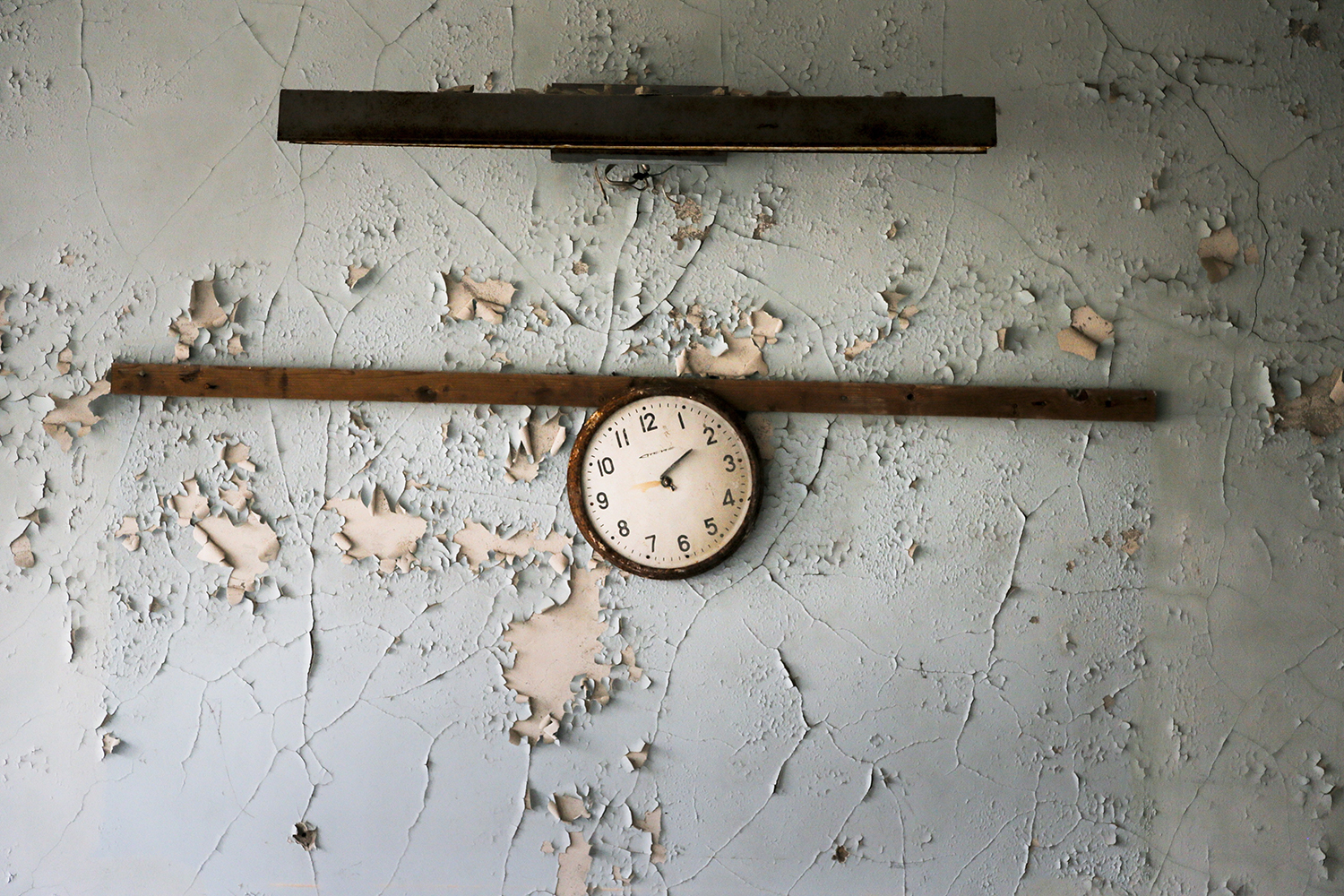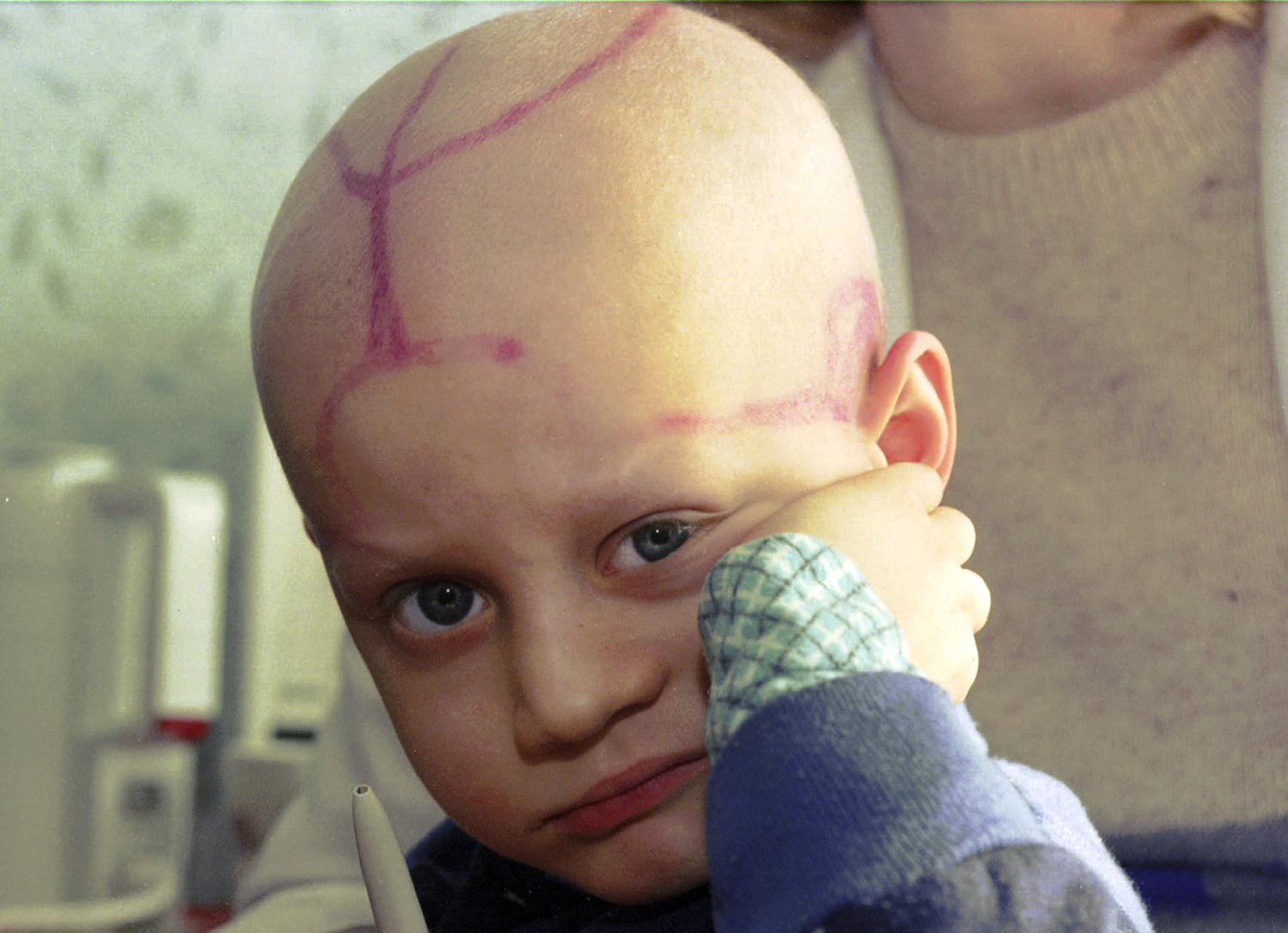Children in war-torn Ukraine learn the art of war

Instead of swimming and playing volleyball, hundreds of children in war-torn Ukraine have spent this summer assembling Kalashnikov rifles and mastering the art of war.
As the deadly conflict in eastern Ukraine entered its third year, some parents here are anxious to make sure their children are ready to fight pro-Russia rebels.
Nearly 10,000 people have been killed in fighting between Russia-backed separatists and government troops in Ukraine’s east since 2014, and despite a cease-fire being formally in place, civilians and troops still die and get injured almost on a daily basis.
In this photo taken on Friday, July 14, 2017, students at a paramilitary camp for children do squat-ups outside Kiev, Ukraine. (AP Photo/Efrem Lukatsky)
The Azov volunteer battalion’s members have been fighting on the eastern front, becoming notorious for their far-right views. It has set up a two-week paramilitary program for children, and as of early August, more than 850 children have received training at seven Azov camps across the country.
Formally part of the Ukrainian National Guard, Azov is a de-facto private army which was originally financed by oligarch Ihor Kolomoisky. Its current sources of funding are unknown, and the battalion says it relies on private donations.
Its members have faced numerous accusations of human rights abuse in the conflict zone. Human Rights Watch and Amnesty International in a joint report last year said it had received credible allegations of torture and “other egregious abuses” by volunteer battalions including Azov.
The training which focuses on the art of war and physical exercise is infused with nationalistic ideas.
In this photo taken on Saturday, July 8, 2017, students at a paramilitary camp for children hit their fists onto their hearts during an evening ceremony outside Kiev, Ukraine. (AP Photo/Efrem Lukatsky)
“Ukraine, holy mother of heroes, come into my heart!” a rank of 100 camouflage-clad children were chanting on a recent evening at the camp outside Kiev, their fists resting on their hearts as the Ukrainian flag was being hoisted.
Azov’s leaders have vehemently rejected suggestions of having neo-Nazi leanings. Their emblem bears a striking resemblance to the Wolfsangel, which was widely used by Nazi German divisions during World War II. Azov, however, claims the letters “N″ and “I″ stand for “national idea.”
The battalion’s far-right views, however, don’t scare off parents who typically pay the equivalent of $120 for their children to spend two weeks with tattooed fighters, running in the woods with mock rifles and doing pushups.
In this photo taken on Saturday, July 8, 2017, students at a paramilitary camp for children holding wooden mock-rifles with the trainer, left, with a real Kalashnikov rifle looking on outside Kiev, Ukraine. (AP Photo/Efrem Lukatsky)
“Children become stronger and more disciplined here,” says Iryna Shvets, the mother of a 13-year-old boy who attended the camp outside Kiev.
Many parents say they feel good knowing that their children are well-equipped to a life in a country which is fighting a war.
Anton Kryuk, the father of a 12-year-old boy who was at the camp in July, says he hopes his child won’t have to fight in the east.
“But until this madness with Russia stops he should know how to defend his country,” he said. “We can only rely on ourselves.”
In this photo taken on Saturday, July 8, 2017, a visiting mother consoles her child at a paramilitary camp for children outside Kiev, Ukraine. (AP Photo/Efrem Lukatsky)
In this photo taken on Friday, July 14, 2017, students at a paramilitary camp for children do push-ups outside Kiev, Ukraine. (AP Photo/Efrem Lukatsky)
In this photo taken on Friday, July 14, 2017, students at a paramilitary camp for children sing the Ukrainian national anthem before the start of exercises outside Kiev, Ukraine. (AP Photo/Efrem Lukatsky)
In this photo taken on Friday, July 14, 2017, a student at a paramilitary camp for children calls the rank to attention outside Kiev, Ukraine. (AP Photo/Efrem Lukatsky)
In this photo taken on Saturday, July 8, 2017, students at a paramilitary camp for children work their way through an obstacle course outside Kiev, Ukraine. (AP Photo/Efrem Lukatsky)
In this photo taken on Saturday, July 8, 2017, students at a paramilitary camp for children holding wooden mock-rifles work their way through an obstacle course outside Kiev, Ukraine. (AP Photo/Efrem Lukatsky)
In this photo taken on Friday, July 14, 2017, students at a paramilitary camp for children train to make their beds on time outside Kiev, Ukraine. (AP Photo/Efrem Lukatsky)
In this photo taken on Saturday, July 8, 2017, students at a paramilitary camp for children throw salt into the fire during an oath of allegiance ceremony at the end of their term outside Kiev, Ukraine. (AP Photo/Efrem Lukatsky)
In this photo taken on Friday, July 14, 2017, a trainer at a paramilitary camp for children holds a rifle during exercises outside Kiev, Ukraine. (AP Photo/Efrem Lukatsky)
In this photo taken on Friday, July 14, 2017, students at a paramilitary camp for children take part in orientation exercises outside Kiev, Ukraine. (AP Photo/Efrem Lukatsky)
Text from AP news story, AP PHOTOS: Children in war-torn Ukraine learn the art of war, by Efrem Lukatsky
Photos by Efrem Lukatsky
Follow AP photographers on Twitter
Written content on this site is not created by the editorial department of AP, unless otherwise noted.





